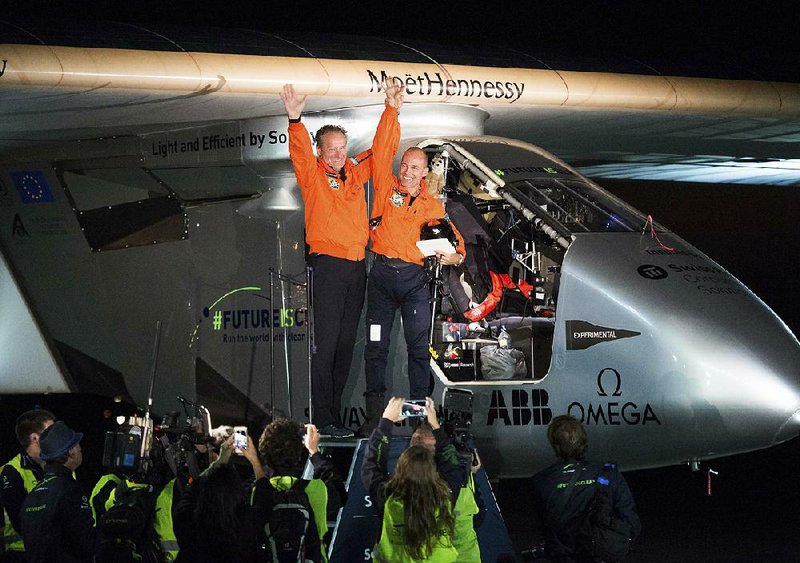MOUNTAIN VIEW, Calif. -- A solar-powered airplane on a mission to fly around the world landed in California, completing a risky, three-day flight across an expanse of the Pacific Ocean.
Pilot Bertrand Piccard landed the Solar Impulse 2 in Mountain View, in Silicon Valley, south of San Francisco, at 11:45 p.m. Saturday after a 62-hour, nonstop flight from Hawaii without fuel. The plane taxied into a huge tent at Moffett Airfield, where Piccard was greeted by the project's team, including sponsors from Google.
"You know, there was a moment in the night, I was watching the reflection of the moon on the ocean and I was thinking, 'I'm completely alone in this tiny cockpit, and I feel completely confident.' And I was really thankful to life for bringing me this experience," Piccard said at a news conference after he landed. "It's maybe -- this is one of the most fantastic experiences of life I've had."
Piccard slept for only 20 minutes at a time inside the plane's tiny cockpit, which has no heat or air conditioning, while having to keep in constant contact with the Europe-based control center.
"You have interviews, navigation control, communications with the control center in Monaco," Piccard said. "You have health checks -- a lot of health checks. It's very active, there are a lot of things to do, but you can nevertheless enjoy it."
Piccard said he uses self-hypnosis to keep his energy up and puts heating pads inside his shoes and gloves for warmth. He said he has no complaints about the ready-made meals of risotto, chicken curry and potatoes he can warm up with a special heat packet.
Piccard and fellow Swiss pilot Andre Borschberg have been taking turns flying the plane on an around-the-world trip since taking off from Abu Dhabi, the capital of the United Arab Emirates, in March 2015. It has made stops in Oman, Burma, China, Japan and Hawaii.
The trans-Pacific legs were the riskiest part of the plane's travels because of the lack of emergency landing sites.
The aircraft faced a few bumps along the way.
The Solar Impulse 2 landed in Hawaii in July and was forced to stay in the islands after the plane's battery system sustained heat damage on its trip from Japan. The team was delayed in Asia, too. When first attempting to fly from Nanjing, China, to Hawaii, the crew had to divert to Japan because of unfavorable weather and a damaged wing.
A month later, with better weather conditions, the plane left Nagoya in central Japan for Hawaii.
The plane's ideal flight speed is about 28 mph, though that can double during the day when the sun's rays are strongest. The carbon-fiber aircraft weighs over 5,000 pounds, about as much as a midsize truck.
The plane's wings, which stretch wider than those of a Boeing 747, are equipped with 17,000 solar cells that power propellers and charge batteries. The plane runs on stored energy at night.
Solar Impulse 2 will make three more stops in the United States before crossing the Atlantic Ocean to Europe or northern Africa, according to the website documenting the journey.
"The adventure continues," Piccard said. "The story is not finished."
The project, which is estimated to cost more than $100 million, began in 2002 to highlight the importance of renewable energy and the spirit of innovation.
A Section on 04/25/2016

